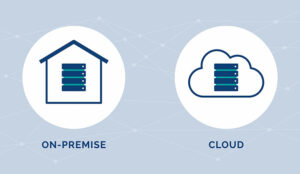Josh Kivenko of Lifesize shares his advice for overcoming the biggest fears and risks associated with the weighty decision to migrate a contact centre to the cloud.
Reversing Aversion to Change
So you’ve done your risk calculus and you’re committed to moving your contact center to the cloud, obstacles be what they may.
For many organizations, the biggest challenge boils down to one word: inertia. And whether it’s institutional inertia, technological inertia or cultural inertia, the same law applies: in business, as in physics, systems at rest will tend to remain at rest.
To move something as massive as an enterprise contact centre organization, you’re going to need a lot of people willing to row in the same direction.
Not only do you need to demonstrate ROI to executives and woo stakeholders from factions outside of the contact centre, you also need to make sure the contact centre teams themselves — teams that, as mentioned, tend to be traditionally change-averse — are on board with a sweeping and potentially disruptive transformation.
Doing so will require an explicit change and risk management strategy that begins with a sound cost-benefit analysis, but also goes beyond the topline business risks to address the underlying emotional stakes for everyone involved, all the way down to the individual agent.
Weighing Business Risk and Communicating Stakeholder Impact
To get everyone on board, you’ll first need to thoroughly understand the entirety of what the project will entail.
If you’ve conducted an exhaustive cost-benefit analysis, all the better, but even if you haven’t, be sure to at least have a firm grasp of the project’s risk and feasibility before you begin reaching out.
You should have clear, decisive answers to the following questions:
- What will it cost?
- What about compliance?
- Can we sell it to our stakeholders?
- How will it impact agent experience?
- How will it impact customer experience?
- Can I measure it?
- Can it scale?
What often makes CCaaS migration so daunting is the simple fact that the contact centre impacts everything. All calls and customers come in through it. All interactions are captured into it, whether it’s put through a CRM or not.
It’s critical for both revenue generation and customer relationship maintenance; a span of downtime that might not be a big deal for HR software would be absolutely catastrophic for a contact centre.
So, there’s no doubt that migration will be disruptive. The question is how disruptive? To answer this question, you’ll need to identify all relevant stakeholders who will be impacted by migration.
Commonly involved and impacted business units include:
- Finance — Contract negotiation, procurement
- IT — Minimizing interference with other digital transformation initiatives, maximizing integration with other systems
- DevOps — Infrastructure validation, minimizing impact on availability/reliability
- Security — Ensuring cybersecurity and compliance
- Customer Success — Reducing disruption to delivery of customer care and training
- Engineering — Releases and maintenance
- Marketing and Sales — Planning to avoid overlapping campaigns
Consider the needs and priorities of each group:
- Where do they intersect?
- Where do they conflict?
- How important are they to the overall success of the project?
Most involved parties will intuitively understand that the stakes are high. The best approach, then, is to be open, honest and upfront about the obstacles, as well as how the project will ultimately benefit both them individually and the organization as a whole.
In facing the top fear associated with a move to the cloud – aversion to change and impact – careful consideration and clear communication are key.
Amid these tumultuous times in contact centres around the world, it’s important for your stakeholders to realize that circumstances have changed and doing nothing has its own risks.
As organizations scramble to accelerate their digital transformation agendas, legacy solutions are being abandoned.
Failure to adequately support WFH agents, better handle unpredictable demand spikes and adopt new digital services faster damages the faith of both customers and employees and can mar your organization’s competitive position irreparably.
But don’t fret, it’s not an “all or nothing” proposition; cloud migration doesn’t have to be a total “redo” on Day one.
Your organization has complete control over which components to replace and when to help teams acclimatize, keeping inevitable disruption at a manageable level.
Author: Guest Author
Published On: 3rd Feb 2021
Read more about - Guest Blogs, Lifesize















